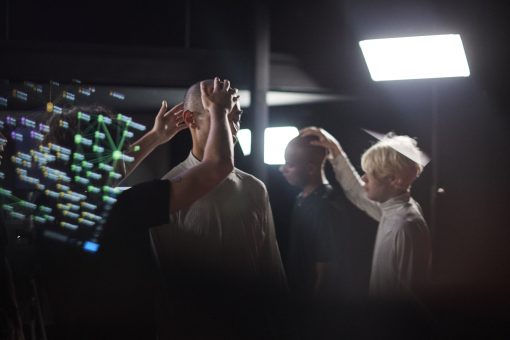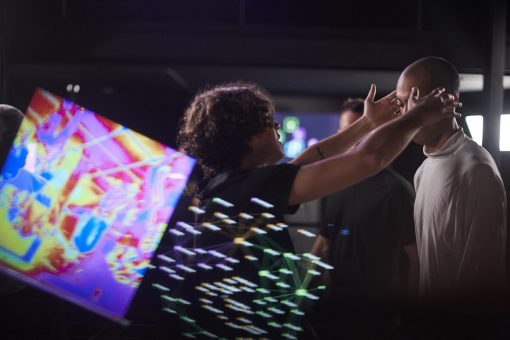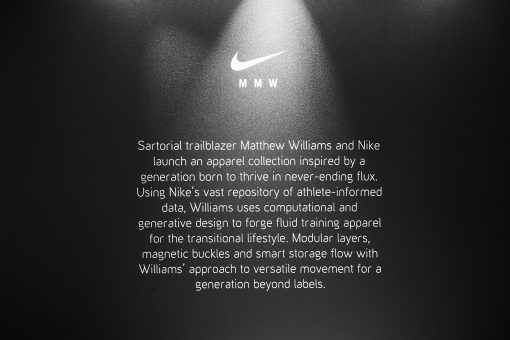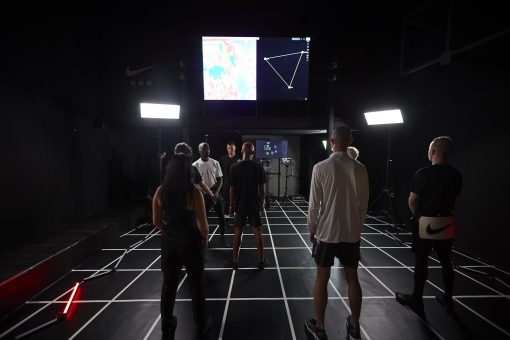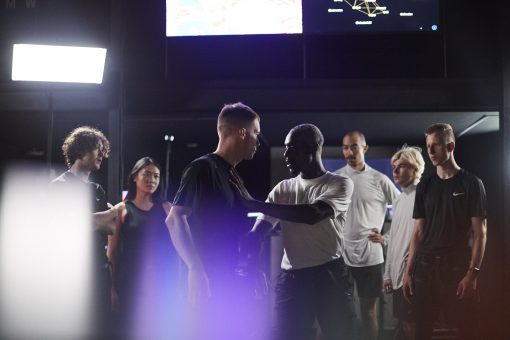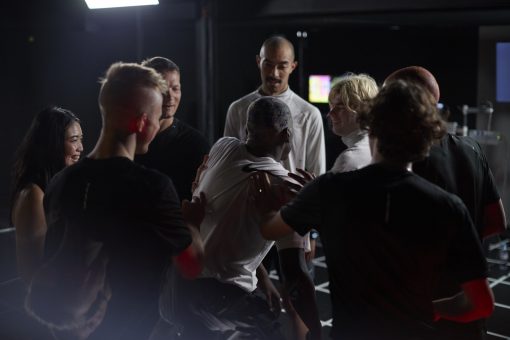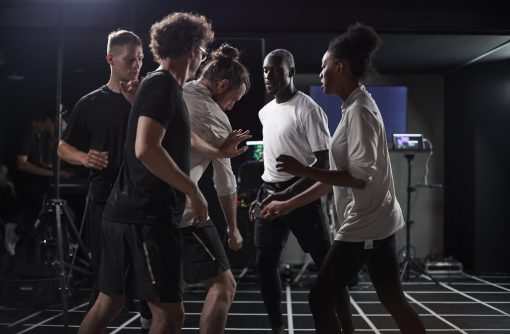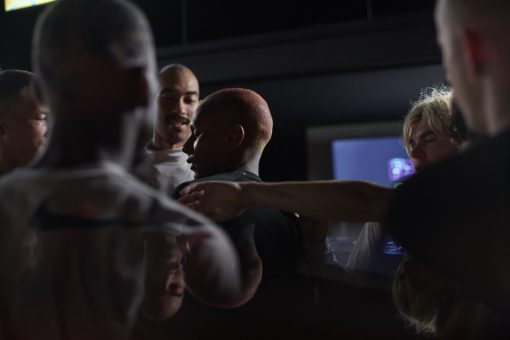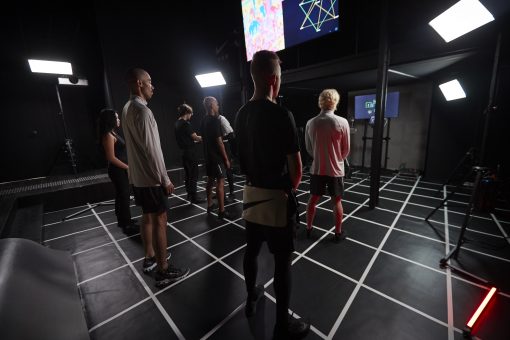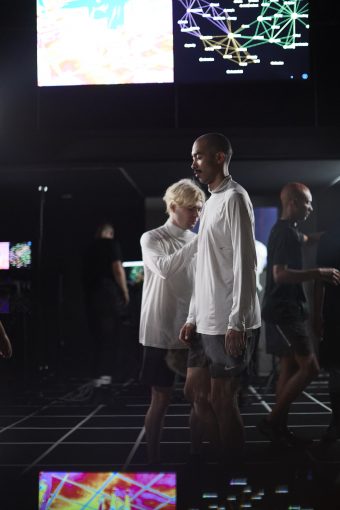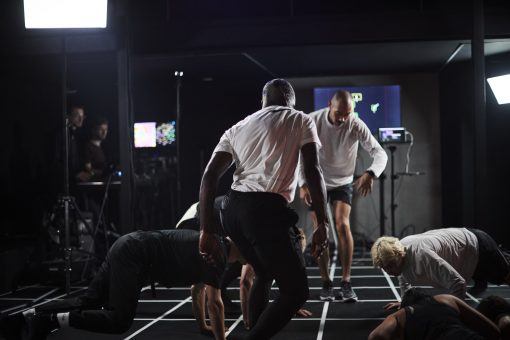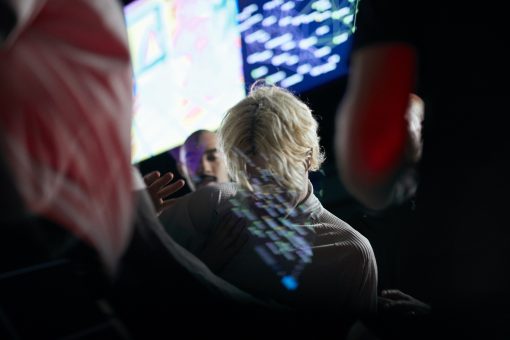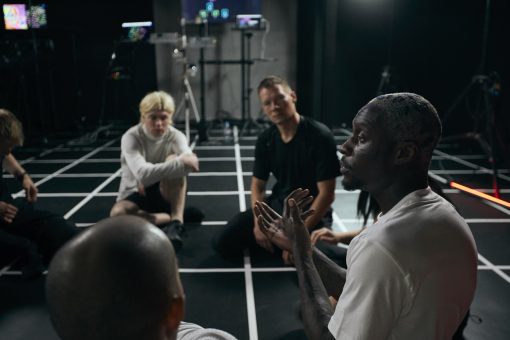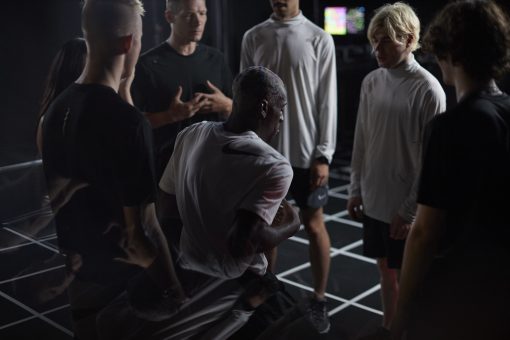Posted by Nodus Labs | September 9, 2018
Agile Cross-Contextual Confluence Workshop: Interdisciplinarity through the Body
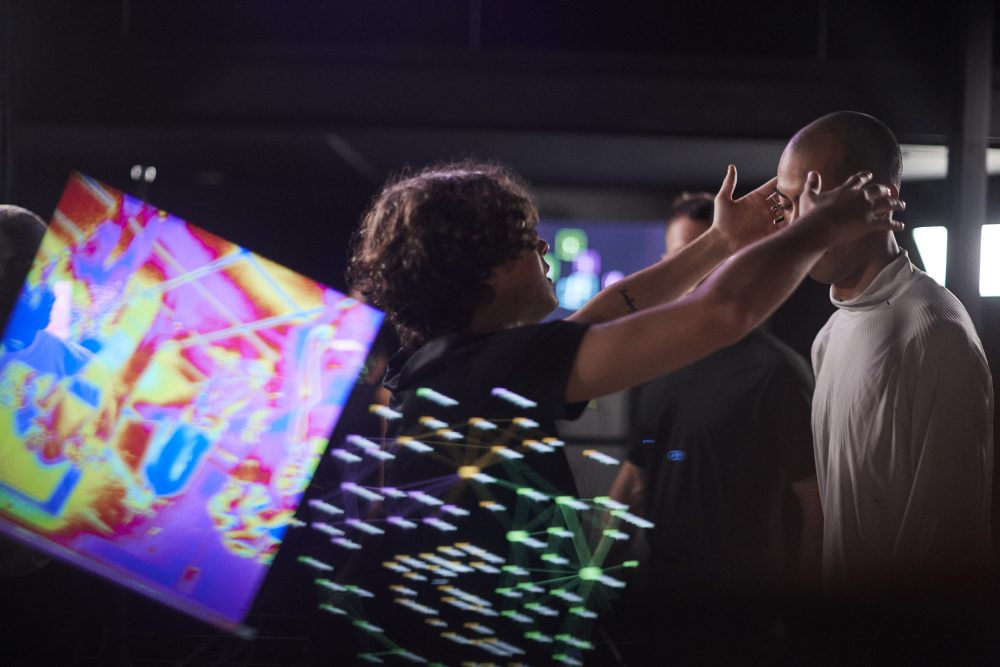
In this workshop, conducted in collaboration with Nike Lab x Matthew Williams, ∞OS, the audiovisual artist NSDOS, Theoriz creative bureau and Maqs Productions, we created a live interactive environment to stimulate cross-contextual learning and creative approaches among the participants. It was presented over the span of four days, two 1-hour sessions for limited audience daily, at Nike Lab in Paris in June 2018.
In this work we used InfraNodus text-to-network visualization tool, live space tracking, musical landscapes, and body-heatmaps to provide actionable live feedback to the workshop’s participants.
Various exercises were introduced from ∞OS bodymind operating system to build rapport within the group and to propose alternative behavioral patterns in situations of physical or psychological stress.
We linked all the mediums together and, combined with the physical and verbal instructions, this workshop offered a unique experience activating cross-contextual thinking, boosting creativity, improving problem-solving skills, and helping to deal with difficulties in a fluid and adaptive way.
1. Context: Nike x Matthew Williams and Computational Design
Nike Lab presented a collaboration with Matthew Williams, a lead designed of the Alyx brand, who is a proponent of computational design and sustainability. In his collection Matthew used the data that Nike gathered from athletes all around the world in order to create breathable, durable and comfortable designs that could fit into any context.
The new collections from Nike Lab are usually introduced through exclusive invite-only training sessions where the guests and influencers can try the equipment in action. What was needed in this case was a training session that went beyond the physical into the mental and creative realms. This was the intention of our collaboration: bringing in scientific methodologies, discourse visualization tools, space tracking systems and heatmaps, music and sound (created by NSDOS in collaboration with the Theoriz lab), in order to activate the different senses and different modalities of perception and action.
Our methodology to stimulate cross-contextual confluence was very much in resonance with the new collection’s focus on a generation in a “never-ending flux” and “transitional lifestyles”. Our goal was to provide the participants with the concrete tools that help maintain fluidity and adaptivity without compromising one’s identity. We also focused on presenting various techniques for shifting between different contexts in physical, mental and social realms. Finally, the presence of several linked mediums, which were providing constant feedback enabled the participants to practice cross-contextual confluence on the level of senses and perception.
2. ∞OS: Finding Confluence in Movement through Physical Training
The basis of the workshop was the physical practice ∞OS, which is based on finding confluence in movement. The main principle here is to establish fluid dynamics within one’s own body and to then apply it towards the environment. One of the outcomes is a much better understanding of conflict dynamics and the improved ability to adopt to the changing circumstances or to change them yourself.
∞OS is called body-mind operating system because essentially it is a set of principles and procedures, which can be used to construct new patterns of behavior. Its learning method is to deploy these new patterns on the level of the body and to then train their activation in other contexts through the new reflexes.
The ∞OS approach is based on radical embodied cognitive science. The main postulate is that we are constantly involved in a complex web of dynamic relations. Our perception and our actions are defined by the affordances (potential possibilities), which emerge from this complex web. We cannot fully control what they are, but we can have a certain degree of awareness over its structure and the patterns that tend to emerge inside. We then introduce several principles of action into that web of relations, which will allow one to define and practice their agency from within.
The main idea here is to ensure that the structure of this complex web — the affordances network — maintains a certain degree of heterogeneity and yet stays connected on the global level. We practice that through a combination of exercises that allow one to experience isolation that is in touch with the whole, so that the notions of modularity, non-equilibrium stability, network propagation can be both understood and experienced on the level of the body. Physical experience plays an important role here as it helps deploy the new patterns of behavior on the level of the subconscious circuits (reflexes) ready to be activated in any context that may arise.
3. Cr0ss-Contextual Confluence Using Live Auditory and Visual Feedback
The notion of cross-contextual confluence is somewhat related to the idea of interdisciplinary. However, where interdisciplinarity maintains the borders and limits between the disciplines, cross-contextual confluence dissolves them through merging the disciplines together. It’s not anymore about combining science and sports to produce high performance athlete equipment. It is rather about creating a space where science and sports can fuse and yield something unexpected as a result. If interdisciplinarity is about productivity, cross-contextual confluence is about creativity.
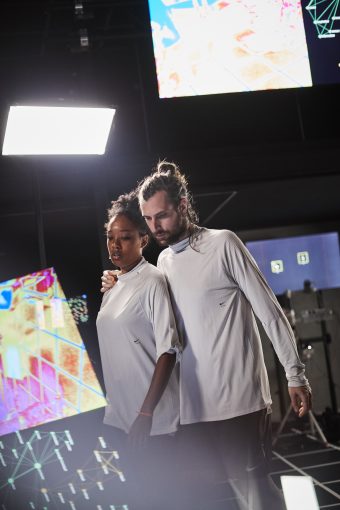
Practicing movement and self-awareness
In order to create this space, together with NSDOS and Theoriz we set up several audio-visual mechanisms for direct live feedback to the participants’ actions. These mechanisms were globally linked to enable free data transfer across the network.
When the facilitator made an instruction, it would encourage a certain activity that participants could perform. As the instructions were made using language, they were projected using InfraNodus text-to-network visualization tool. Using a MIDI link InfraNodus sent the signal to the musical set-up of NSDOS to generate a new sonic cue.
At the same time, the actions of the participants resulting from the instructions would trigger the space tracking cameras, which would in turn provide visual feedback and send a signal to the musical instruments as well. Live heatmap visualization would also allow the participants to get direct visual feedback.
The movements get influenced by the sound and visuals, which, in turn, influence the further instructions, creating a network of live feedback loops that operate in different registers. This way the visual, the auditory, the kinesthetic and the cognitive channels are fully engaged.
Such approach enables participants to have a direct experience of what it’s like to operate in several different contexts and levels of operation simultaneously. We provide the techniques that enable them to synchronize their experiences across the different frequency bands, so that this resulting diversity can be harnessed and focused into a creative realm.
4. ∞ — Polysingularity as a Basis for Sustainable Evolution
In this workshop we created the space for the participants to actively experience cross-contextual confluence not only as a theoretical concept, but also on the level of the body. The tools that we used provided various instruments and feedback mechanisms to allow one to reflect on one’s actions in real time and adjust them, if necessary. Therefore it was also important to provide several interpretative algorithms that would allow the participants to take a specific course of action depending on the information that they receive.
Based on our study of bias in networks, we developed a special recommender algorithm, which proposes a course of action that will most likely have a positive influence on evolutionary development of any dynamic complex structure. For example, if a text (discoursive network) is identified as a structure with a very high bias (strongly interconnected) a recommended course of action is to bring it into relation with another context to introduce more heterogeneity inside. Otherwise it will stay too locked onto itself (e.g. filter bubble). It’s been shown in numerous studies that such approach leads to a more sustainable development of a dynamic system and makes a network more robust and immune to external influences.
We used this algorithm to steer the dynamics of our training session and also to show the participants how variability in action can be used for sustained, creative development. For example, when the text network visualization was generated from the workshop’s discourse, we encouraged the participants to focus not only on the most prominent concepts, but also on the gaps between them (so-called “structural holes”, which have been shown to generate creative solutions). In the same way, a collective movement that stayed slow for a prolonged period of time would be detected by our algorithm and a special trigger would activate a faster rhythm that would encourage the participants to change their pace of movement.
We thank Nike Lab and Matthew Williams for the provided opportunity and Maqs Productions for the organization. Photos courtesy of Nike. Feel free to contact us if you want to learn more about the project and follow us on Facebook and Twitter.

